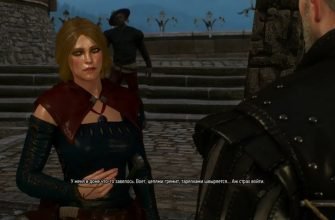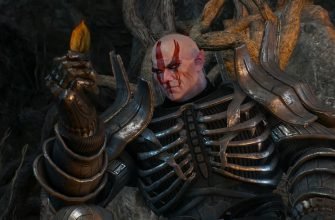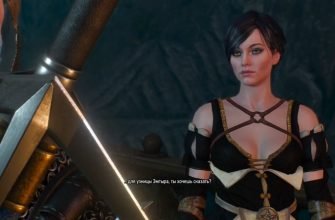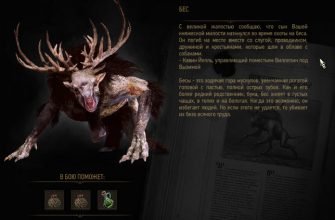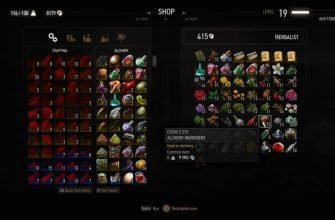In the vast world of The Witcher 3: Wild Hunt, players embark on various quests that enrich the storyline and explore the depths of Geralt of Rivia’s universe. Among these quests is “Faithful Friend,” a secondary quest that players can undertake in the White Orchard region. This quest, accessible during the Empress ending of the game, offers players an opportunity to experience a touching narrative that involves tracking down a runaway horse. The quest not only provides a glimpse into the lives of the war-torn inhabitants but also emphasizes the bond between humans and animals—one of the recurring themes in the game.
- The Context of “Faithful Friend”
- Initiating the Quest
- The Horse’s Pursuit: A Breakdown
- A Meeting with the Soldier
- The Conversation: Insights into the Soldier’s Life
- Quest Rewards and Conclusion
- Reflection on “Faithful Friend”
- Beyond the Quest: Thematic Elements
- A Comparative Glance at Other Secondary Quests
- Conclusion
The Context of “Faithful Friend”
“Faithful Friend” can only be accessed during the specific narrative arc where Ciri decides to become empress. It is complementary to the broader storyline, “Something Ends, Something Begins,” and must be completed before its conclusion. This timing and narrative pathway disentwine it from other storylines, making it a unique experience for players opting for this particular ending.
Initiating the Quest
After reuniting with Yennefer in White Orchard, Geralt returns to a village where he had previously vanquished a griffin. The village, now a setting for the quest, initially seems peaceful. However, shortly after leaving the White Orchard inn, players will witness a commotion unraveling as a horse throws off a peasant (named Mirko) and bolts. This incident marks the start of Geralt’s involvement—a classic catalyst that sets the quest in motion.
The Horse’s Pursuit: A Breakdown
The primary objective in “Faithful Friend” is straightforward: catch the runaway horse. While it may seem elementary, the chase offers some nuances for players to engage with. Here’s how to go about it:
- Spotting the Event: As players exit the inn, they should prepare to witness the peasant being thrown off the horse. Quick reflexes allow Geralt to mount the horse momentarily, although this does not significantly alter the quest’s outcome.
- The Chase: The horse will lead Geralt towards the Woesong Bridge, crossing to the other side. Despite being unable to control the horse fully, players can make it run faster, although the short distance of the chase diminishes the need for speed.
- Destination: Once the chase concludes, players will reach a Temerian soldier.
A Meeting with the Soldier
Upon catching up with the runaway horse, players encounter its true owner—a Temerian soldier named Hubrecht, who has returned from war. This meeting unfolds a rich dialogue sequence where players learn about the soldier’s past and his experiences in the war. Hubrecht reveals the horse’s name, Gulden, and explains that he had left Gulden with his friend Mirko during his time at war.
The Conversation: Insights into the Soldier’s Life
Engaging with Hubrecht offers an emotional depth to the quest. Here are some key elements of the conversation:
- The Soldier’s Return: Hubrecht shares his relief and surprise at finding Gulden after the war. His bond with the horse is evident and displays a theme of loyalty and camaraderie.
- The War’s Aftermath: Players have the opportunity to inquire about the soldier’s exploits. The narrative reveals his bitterness and observations about the final phases of the war, shedding light on the broader geopolitical landscape of The Witcher universe.
Quest Rewards and Conclusion
After the conversation, Hubrecht rewards Geralt with a sum of 15 Crowns, acknowledging the effort made in reuniting him with Gulden. In the original Polish version of the game, the horse is named Dukat rather than Gulden. This difference in localization adds a layer of cultural nuance to the game’s portrayal of relationships.
As the quest concludes, players may choose to follow Hubrecht back to Mirko. Here, another short interaction occurs where Mirko processes the situation and acknowledges Gulden’s loyalty in identifying and returning to his original owner.
Reflection on “Faithful Friend”
“Faithful Friend” subtly weaves a narrative that is both heartwarming and grounded in the fantastical reality of The Witcher series. The quest is not simply about catching a horse; it explores themes of loyalty, the ravages of war, and the simple joys of reunion. Such themes resonate with both players and characters, enriching the storyline with plausible human experiences.
Beyond the Quest: Thematic Elements
Moreover, “Faithful Friend” reflects the broader thematic tapestries of The Witcher. Here are some thematic elements worth noting:
- Human-animal Bond: The loyalty of Gulden running towards its master underscores the connection built on trust and companionship—an aspect that The Witcher series occasionally visits through Geralt’s relationship with his horse, Roach.
- War and its Consequences: Hubrecht’s stories from the war add layers to the world-building of The Witcher, showcasing the human elements within this fantasy. These tales often parallel real-world post-war sentiments of nostalgia, loss, and adjustment to peace.
- Cultural Signifiers: The naming conventions and dialogues reflect regional signaling within the game’s localization, emphasizing the cultural authenticity embedded by CD Projekt Red.
A Comparative Glance at Other Secondary Quests
Positioning “Faithful Friend” against other secondary quests in The Witcher 3 highlights its unique mellow tone. While many quests involve combat or complex puzzles, this one revolves around a simpler act, emphasizing the everyday struggles faced by individuals during tumultuous times.
- Engagement without Conflict: Unlike missions where conflict is the cornerstone of progression, “Faithful Friend” relies on dialogue and storytelling as tools for engagement.
- Depth through Simplicity: The quest’s simplicity doesn’t diminish its impact on the player. Instead, it reinforces that not all acts of heroism are grandiose—sometimes, it’s the small, loyal acts that bring fulfillment.
Conclusion
In conclusion, “Faithful Friend” in The Witcher 3: Wild Hunt exemplifies how minimalistic quests weave into the larger narrative, providing depth without overwhelming complexity. The task of catching a runaway horse becomes a vessel for storytelling—a facet that remains integral to the game’s universe. As players navigate this quest, they gain insight into the intricate relationships and societal conditions of The Witcher’s world, encapsulating the series’ ethos that every encounter—no matter how minor—plays a role in the tapestry of Geralt’s adventures.


